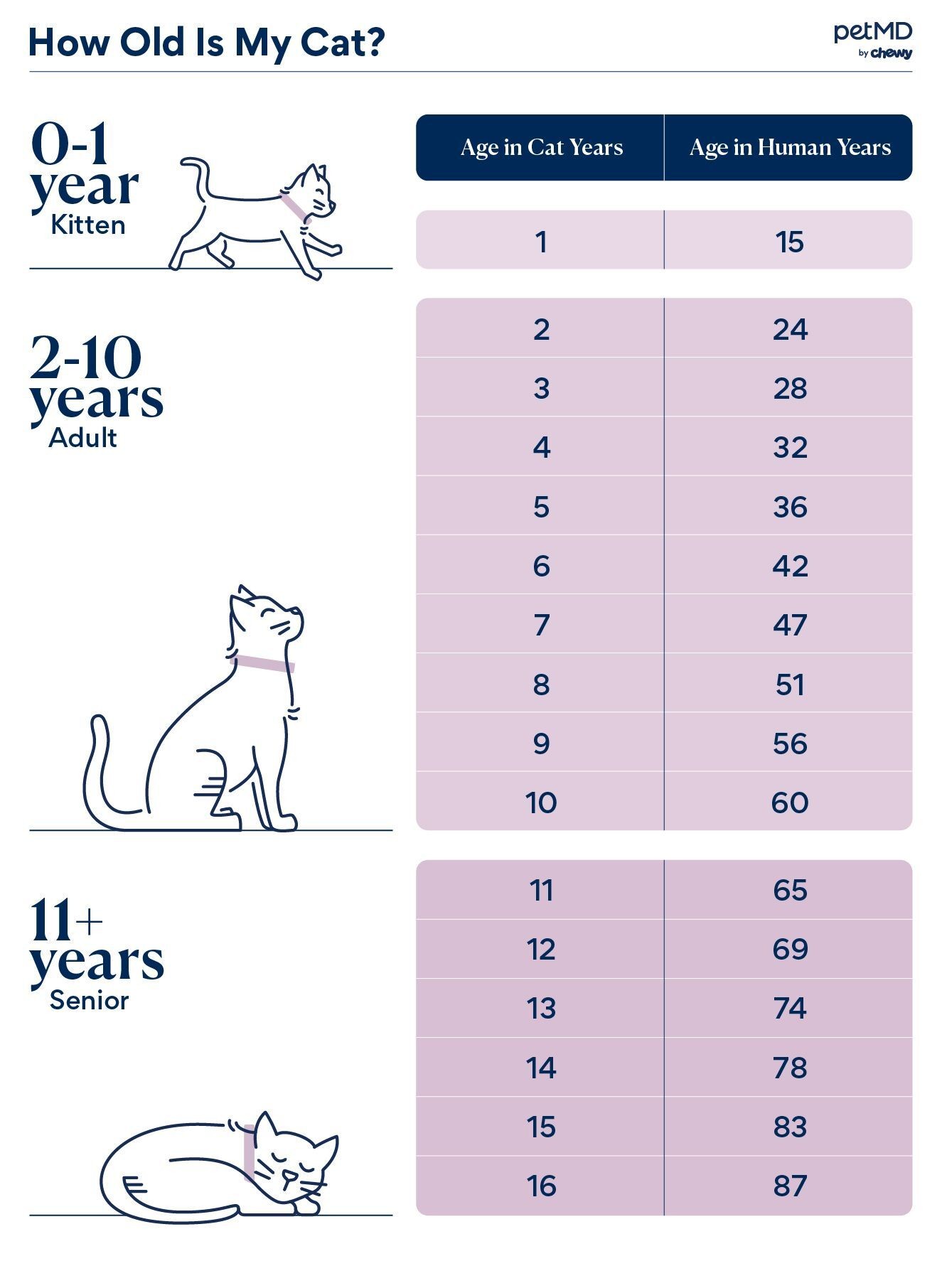Understanding how your cat ages compared to humans is essential for providing the best possible care. While a simple multiplication doesn’t accurately reflect the feline aging process, this guide will help you determine your cat’s age in human years and understand the different life stages of your feline companion.
 A infographic chart detailing the age conversion of a cat
A infographic chart detailing the age conversion of a cat
According to the American Veterinary Medical Association (AVMA), a one-year-old cat is equivalent to a 15-year-old human. By age two, your cat is already 24 in human years. After this, each cat year adds approximately four human years. This means a 10-year-old cat is roughly 56 in human years.
Cat Years to Human Years: A Breakdown
The rapid aging in the first two years reflects the quick development of kittens into adulthood. This accelerated growth slows down significantly after the second year. Here’s a more detailed look at the conversion:
- Year 1: 15 human years
- Year 2: 24 human years
- Year 3: 28 human years
- Year 4: 32 human years
- Year 5: 36 human years
… and so on, adding approximately 4 human years for each subsequent cat year.
Why Understanding Cat Age Matters
Knowing your cat’s age in human years helps you compare their life stage to your own. Dr. Mary Gardner, DVM and co-founder of Lap of Love Veterinary Hospice, explains that comparing ages allows us to understand the physical challenges aging cats might face. An 11-year-old cat (around 60 in human years) might experience similar mobility issues as a senior human.
Determining Your Cat’s Age: Beyond Birthdays
If you adopted your cat, you might not know their exact birth date. Veterinarians can estimate a cat’s age through various methods:
- Dental Examination: Tooth wear, tartar buildup, and gum condition provide clues.
- Physical Examination: Muscle mass, coat condition, and eye health can indicate age.
- Behavioral Observation: Playfulness and activity levels can offer hints.
The Lifespan of Cats
While the average lifespan of a cat is 12-15 years, factors like breed, lifestyle, and healthcare can influence longevity. Purebred cats average around 12.5 years, while mixed breeds tend to live slightly longer, around 14 years. Advancements in veterinary care and nutrition contribute to cats living longer, healthier lives.
Caring for Your Cat at Every Age
Understanding your cat’s age empowers you to provide appropriate care at each life stage. This includes tailored nutrition, exercise, and preventative healthcare. Regular veterinary checkups are crucial for detecting and managing age-related health issues. By understanding How Cats Age Compared To Humans, you can ensure your feline companion enjoys a long, happy, and healthy life.